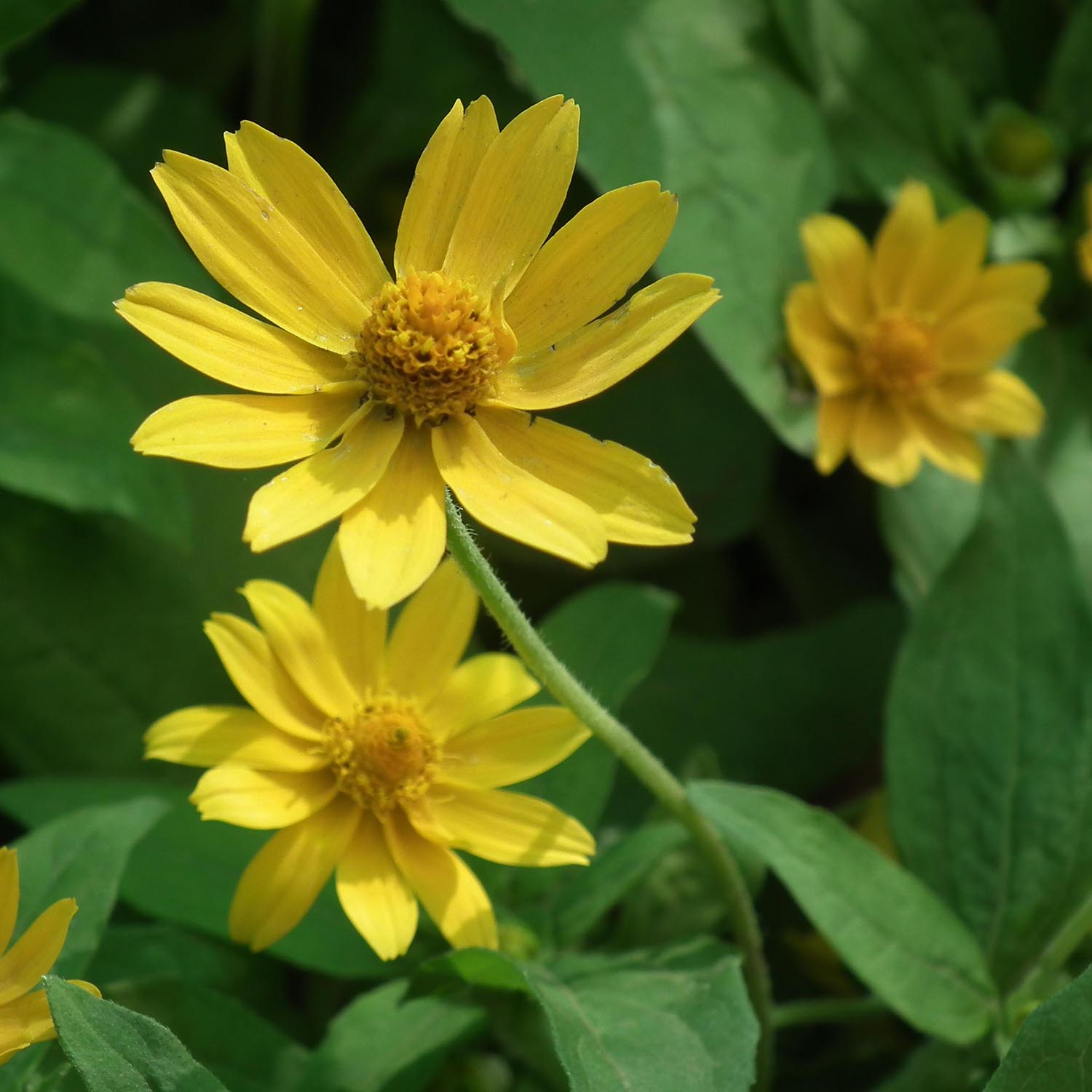
Perennial Helianthus, sunflower: planting, growing and care
Contents
Helianthus in a nutshell
- Cousin of sunflower, perennial sunflower offers a profusion of bright yellow single or double flowers from summer through autumn
- Vigorous and long-lived, perfectly hardy in all regions of France
- Very easy to grow and very floriferous in dry to fresh soil and in full sun
- Not invasive if you choose our non- or only slightly running varieties
- Brings a decidedly cheerful, rustic note to borders, naturalistic meadows or mixed-borders
A word from our expert
Though Sunflower or Helianthus is best known for its annual varieties, there are also perennial sunflowers equally worthy of interest for their generous, late flowering.
Unless you hate yellow, this superb meadow perennial resembling daisies is a sure sign of cheerfulness and optimism from June to November.
If these large yellow daisies had a bad reputation because of their invasive character, as was the case with Helianthus Maximiliani, the new varieties are much easier to contain! Thankfully not all perennial sunflowers are invasive, such as Helianthus atrorubens with its brown centre, Helianthus decapetalus and its cultivars, Helianthus salicifolius with its trailing leaves, or Helianthus giganteus and microcephalus.
These giant perennials, which can reach up to 2 metres tall, combine robustness and profuse flowering and require only one thing: sun and fresh soil.
Discover our varieties of Helianthus or non-invasive perennial sunflowers, and treat yourself to sunshine all summer to brighten a bed, a border or base of bushes in a natural garden!
Description and botany
Botanical data
- Latin name Helianthus
- Family Asteraceae
- Common name Sunflower, Sun
- Flowering from June to autumn
- Height 1.20 to 3 m
- Exposure Sun
- Soil type All, well-drained
- Hardiness -20°C to -25°C
Helianthus, more commonly called “perennial sunflower”, belongs to the large family Asteraceae, like oxeye daisies, the annual sunflower (Helianthus annuus) to which it is closely related, or its cousin the Jerusalem artichoke (Helianthus tuberosus), a root vegetable whose tubercles are eaten.
The genus Helianthus comprises 70 to 80 species native to the southern, central and northern United States, some perennial, which are less well known and have in particular a poor reputation because of their very suckering and therefore very invasive character, such as Helianthus rigidus and Helianthus × laetiflorus, two species now little cultivated.
But fortunately today, not all perennial helianthuses are born colonisers! This is no longer the case with modern varieties and there are perennial sunflowers with single or double flowers that are little or not running.
The species most widespread among non-invasive perennial sunflowers is Helianthus decapetalus, together with its cultivars and hybrid varieties such as ‘Capenoch Star’, ‘Plenus’ or ‘Lemon Queen’. The nomenclature of the numerous hybrids and cultivars is rather confused.
Helianthus microcephalus, for its part, is a small-flowered perennial sunflower. One also often encounters ‘Monarch’, the famous cultivar of Helianthus atrorubens, a species with a brownish-purple central disc.
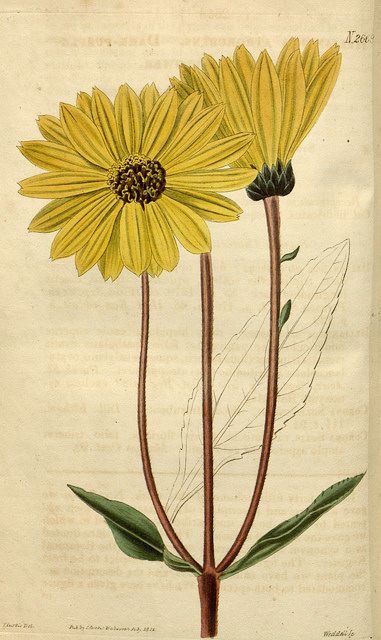
Helianthus atrorubens – botanical illustration
From a non-running woody, tuberous or rhizomatous stump, the plant develops in spring a tall bushy clump of sturdy stems with an erect habit, sometimes slightly spreading. The whole, higher than wide, can quite quickly reach up to 2.50 m in height, sometimes more (4 m for Helianthus giganteus), with a spreading of 60 cm to 1 m.
It needs about two years to fill out properly, then over time it forms particularly vigorous columns of flowers. The perennial sunflower is long-lived.
These many very ramified stems are often bristly with bristles and rough towards their tips. They are punctuated by deciduous leaves arranged alternately or oppositely up the stems. Simple, lanceolate, ovate, with an edge regularly dentate or crenate, the leaves measure 5 to 10 cm long. They range from medium green to dark green, are glabrous above and pubescent beneath.
Helianthus salicifolius is distinguished by its long narrow arching leaves similar to those of the willow.
From this elegant vegetation, rough to the touch, whose interest lies mainly in its abundance, rise the slender floral stems that nevertheless hold well in the wind.
The perennial sunflower offers a profusion of single or pompom flowers with a sunny beauty. Resembling small sunflowers or daisies, they open from summer until the first frosts. Perennial sunflowers most often flower late in the season.
The heads, solitary or grouped in loose corymbs 5 to 8 cm in diameter, appear at the top of the leafy stems, facing the sky. They are formed of thread-like, pointed ligules arranged radially around a centre of florets in sun-yellow or orange-yellow, browning at ripeness or sometimes purple, occasionally highlighted by a cluster of black stamens.
As its name suggests, Helianthus decapetalus presents ray florets composed of ten petals. Some of its cultivars, such as ‘Plenus’, are characterised by very double heads formed of an infinite number of ligules, giving the flower a tousled pompom look reminiscent of a dahlia. Other varieties like ‘Capenoch Star’ are distinguished by a prominent centre formed of an infinite number of florets nicely tubular.

Some perennial Helianthus: H. microcephalus, H. ‘Lemon Queen’, H. decapetalus ‘Plenus’, H. salicifolius (note its distinctive foliage!)
Helianthus microcephalus also offers small simple daisies 3 to 4 cm in diameter.
All these perennial sunflower flowers bear a bright colouring from golden yellow, sulphur yellow to lemon yellow.
Some, such as Helianthus maximiliani or Maximilian sunflower, exhale a delightful chocolate fragrance.
They renew continuously from July to November, attracting foraging insects, notably bees, sometimes right up to the onset of winter. These flowers then turn into seeds that will feed birds during the off-season.
With their straight stems, the simple yet radiant inflorescences of Helianthus feature in naive, country-style summer and autumn bouquets.
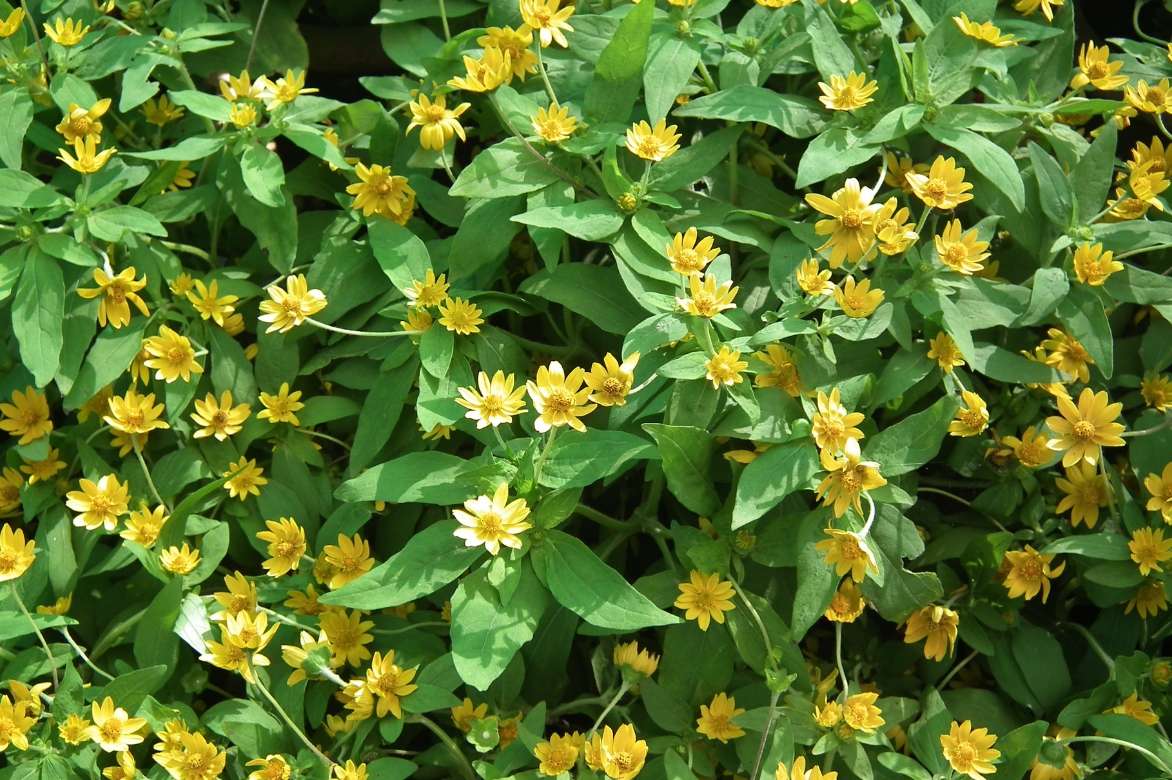
Helianthus microcephalus displays a multitude of small yellow flowers
Easy to grow and fully hardy (down to at least -20 °C), Helianthus can be cultivated in all regions of France. The perennial sunflower prefers full sun to flower well but sheltered from strong winds. While it tolerates ordinary soil, even calcareous, a fresh, fertile and well-drained soil, even if clayey, will produce better flowering.
Its candid, colourful flowers always bring much vibrancy, lightness and cheer to country borders at the end of the season. Very graphic, the perennial sunflower is often planted at the back of a border, singly or in groups to compose charming, country scenes in every corner of a natural garden, such as in a wildflower meadow.
Main species and varieties
Good news: new varieties of perennial sunflowers are little or non-running, opposite to wild species formerly offered that tended to invade the whole garden!
There are now beautiful perennial sunflowers with single or double flowers, non-invasive yet equally floriferous and robust!
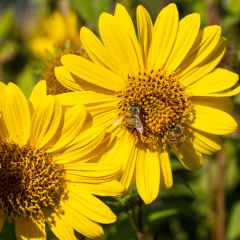
Helianthus decapetalus Capenoch Star
- Flowering time September to November
- Height at maturity 1,30 m
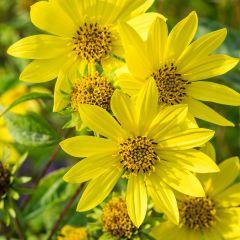
Helianthus Lemon Queen
- Flowering time September, October
- Height at maturity 1,50 m

Helianthus decapetalus Flore Plenus
- Flowering time October to December
- Height at maturity 1,50 m
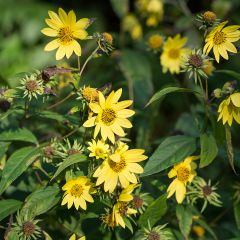
Helianthus microcephalus
- Flowering time August to November
- Height at maturity 1,50 m
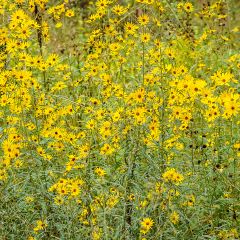
Helianthus salicifolius
- Flowering time October, November
- Height at maturity 2 m
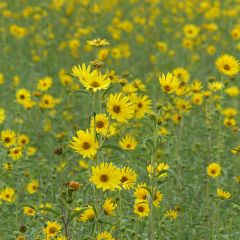
Helianthus maximiliani - Maximilian's sunflower
- Flowering time July to November
- Height at maturity 2,50 m
Discover other Helianthus
View all →Available in 1 sizes
Available in 1 sizes
Available in 1 sizes
Available in 2 sizes
Available in 2 sizes
Available in 1 sizes
Available in 1 sizes
Available in 1 sizes
Available in 1 sizes
Available in 1 sizes
Planting
Where to plant Helianthus or perennial sunflower?
Perennial sunflower is a giant with very simple cultivation that tolerates both drought and heavy clay soils.
Hardy to at least -20 °C, Helianthus will grow anywhere in France as long as there is sun!
For good flowering, this large yellow daisy asks for only one thing: sun and a situation sheltered from wind that could topple its tall stems. Plant clumps in front of bushes that will serve as natural supports.
Undemanding about soil type, and accepting any type of soil, even calcareous or clayey, Helianthus will reach its full potential in rather fertile, well-drained soil that stays fairly cool during summer, especially in the first years. In poor soil, it will cope but will probably be less floriferous.
In poorly drained soil, it will fear winter flooding, which can be fatal.
Perennial sunflower is a giant daisy that can reach nearly 3 m in height. While modern varieties have a growth much less aggressive than botanical species, their vigour will be perfectly controllable; nevertheless ensure they are given enough space, as Helianthus tends to shade neighbouring plants.
These large perennial sunflowers are a boon for gardeners wishing to flower beds abundantly from summer until first frosts, without having to replant each year.
Its graphic silhouette will majestically dominate other flowers, bringing real structure to compositions. It is unmatched for inspiring simple, wild-looking scenes. Perfect for bridging flowering between summer and autumn perennials.
In the garden, it will majestically dominate other flowers.
Often planted at the back of naturalistic beds, its versatile nature also invites it to enliven borders and mixed borders, to flower a well-exposed wall, or to punctuate flowering meadows with its tall stature. A few plants are enough to dress the base of a hedge or can also be useful to replace a bushy hedge and quickly create a vegetative screen that returns each year.
When to plant Helianthus or perennial sunflowers?
Planting of perennial sunflowers is done in spring, in March–April, or in autumn from September to November, outside periods of frost or drought.
How to plant perennial sunflower?
In open ground
Rather rich soil will encourage good flowering: add a generous amount of well-rotted compost.
Leave a spacing of 50 cm to 1 m between plants depending on adult size and allow 2 to 5 buckets per m² for a striking effect. Perennial sunflower can be used in large drifts, alone or mixed with other giant perennials.
- Dig a hole 2 to 3 times the volume of the bucket
- In well-loosened soil cleared of weed roots and stones, make a bed of gravel at the bottom of the hole
- Add one or two handfuls of compost
- Mulch to keep soil cool during summer
- Water regularly after planting until established
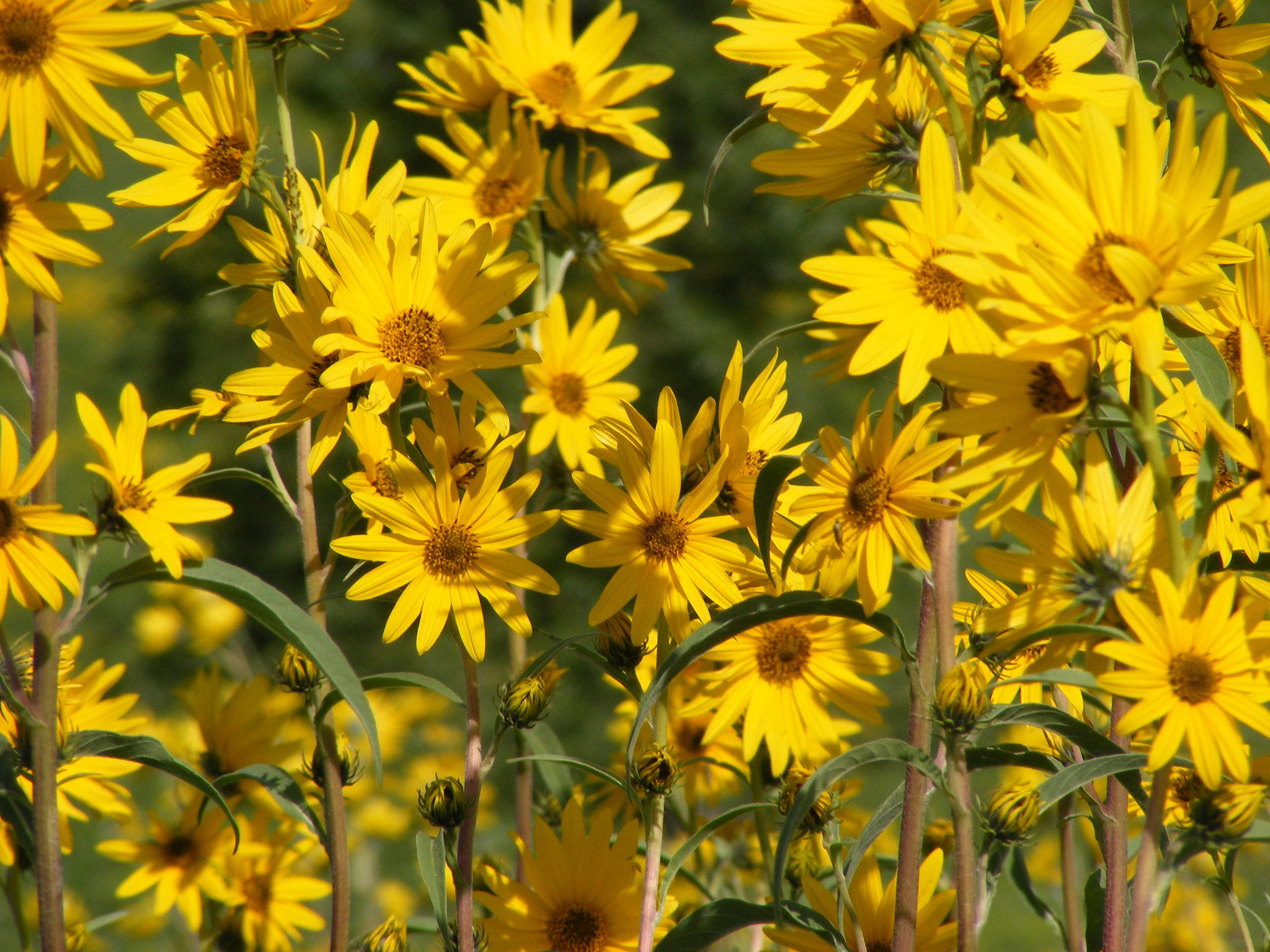
Read also
Succeeding in sowing perennial plantsWhen and how to sow perennial sunflower seeds?
Sow perennial sunflower seeds in spring from February to April in a seed tray under a cold frame at 18 to 21°C.
- Broadcast seeds over good seed compost
- Cover seeds lightly with compost
- Water generously with a fine spray
- Keep substrate moist, in light, out of direct sun until germination, between 7 and 21 days
- As soon as young plants have become sturdier, transplant them into individual buckets
- By late May to early June, when garden temperature has warmed, plant young plants into soil enriched with compost
- Water to encourage rooting
Pruning and care
Once well established in sun and well-drained soil, perennial sunflower grows on its own, with minimum care, becoming more luxuriant each year.
In first summer after planting, water it regularly, but do not overwater: plant should remain cool, not waterlogged. Thereafter, it will require little water, except during prolonged summer droughts.
Mulch during summer with well-rotted compost or manure; besides encouraging good development, this will ensure plant stays sufficiently cool during hot season.
Clumps are sturdy and do not need to be staked.
Remove faded flowers regularly to encourage flowering.
As with all sunflowers, height can be reduced and flowering slightly delayed by pinching the stems in early summer.
If you have planted an aggressive, vigorous species such as Helianthus Maximiliani, in autumn spade to remove some peripheral roots in order to limit the spread of that clump.
Every 3 to 4 years, in spring or autumn, divide clumps to restore vigour.
When and how to cut perennial sunflowers?
After flowering, in late autumn or winter, remove dead foliage and cut back the dried clump to 50 cm above ground to maintain a compact habit and prevent seed formation that needlessly exhausts the plant.
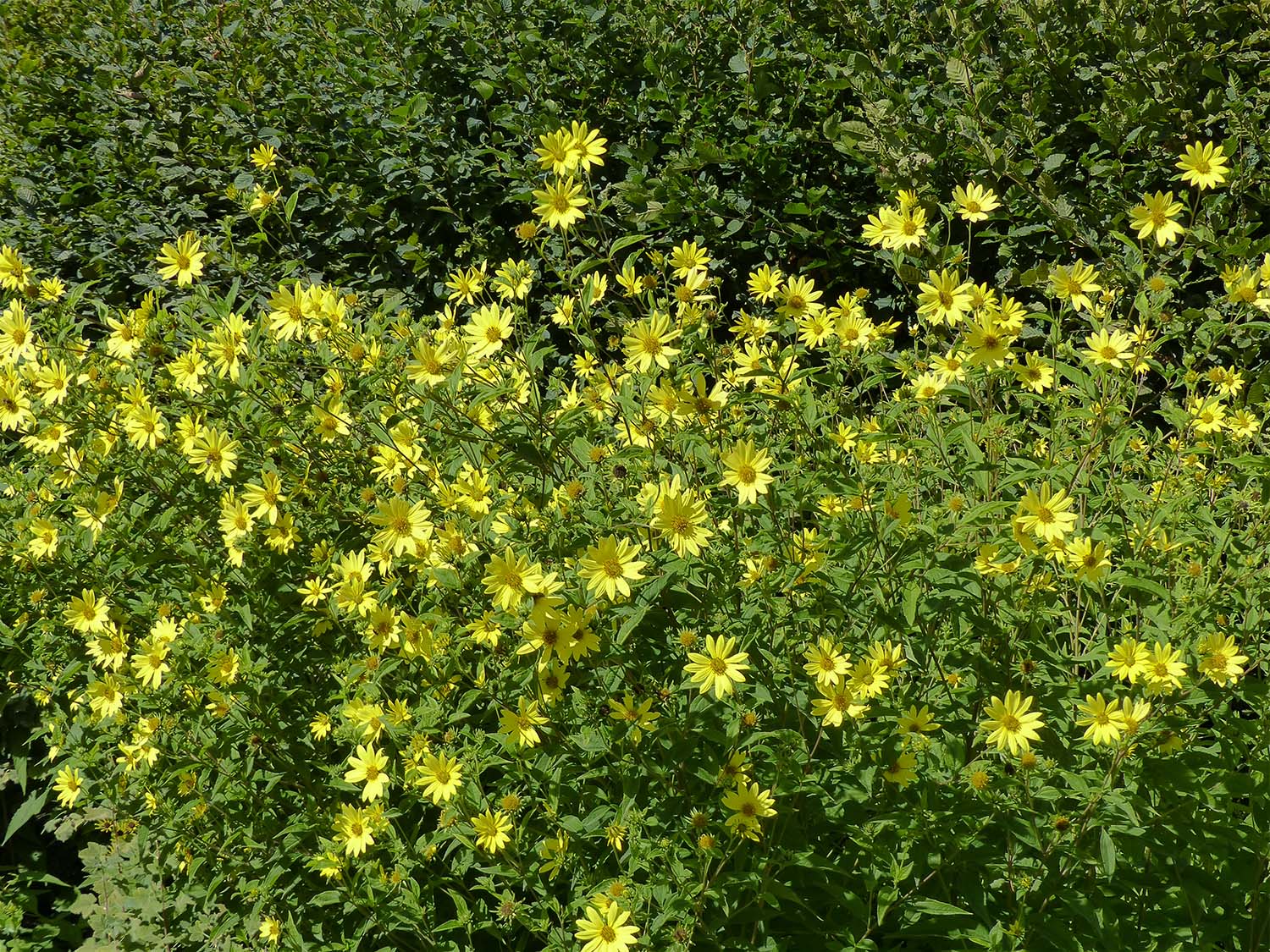
Potential pests and diseases
Deciduous, clumps of perennial sunflowers die back in winter and reappear in spring, where young shoots will be a feast for slugs and snails. Small black slugs, meanwhile, love to devour roots… Spray with fern manure to combat their attacks and discover our 7 ways to fight slugs effectively and naturally and how to make a slug trap.
Towards end of season perennial sunflowers are often susceptible to powdery mildew, which leaves a white coating on foliage. Ensure you leave enough space between young plants to prevent the fungus from appearing. Avoid wetting foliage and discover our advice to limit disease occurrence.
Propagation: Clump division
Perennial sunflower multiplies easily by dividing clumps in spring or autumn on stumps at least 3 years old.
- Using a garden fork, gently lift clump out
- Divide off a few peripheral pieces with roots
- Replant immediately in garden in well-drained, cool soil
Companion planting for sun-loving perennials
With their tall, architectural silhouette, large perennial sunflowers are indispensable in all natural and naturalistic gardens, to which they bring vigour and lightness.
At back of border, or in mixed borders, these tall perennials with a rustic air fit perfectly into slightly wild areas of garden where they are easily joined by other perennials equally easy to grow and undemanding.
They are essential for creating vivid, highly luminous displays. Strong yellow/blue contrasts can be achieved with blue flowers of Ceanothus, Siberian sages, and Asters.
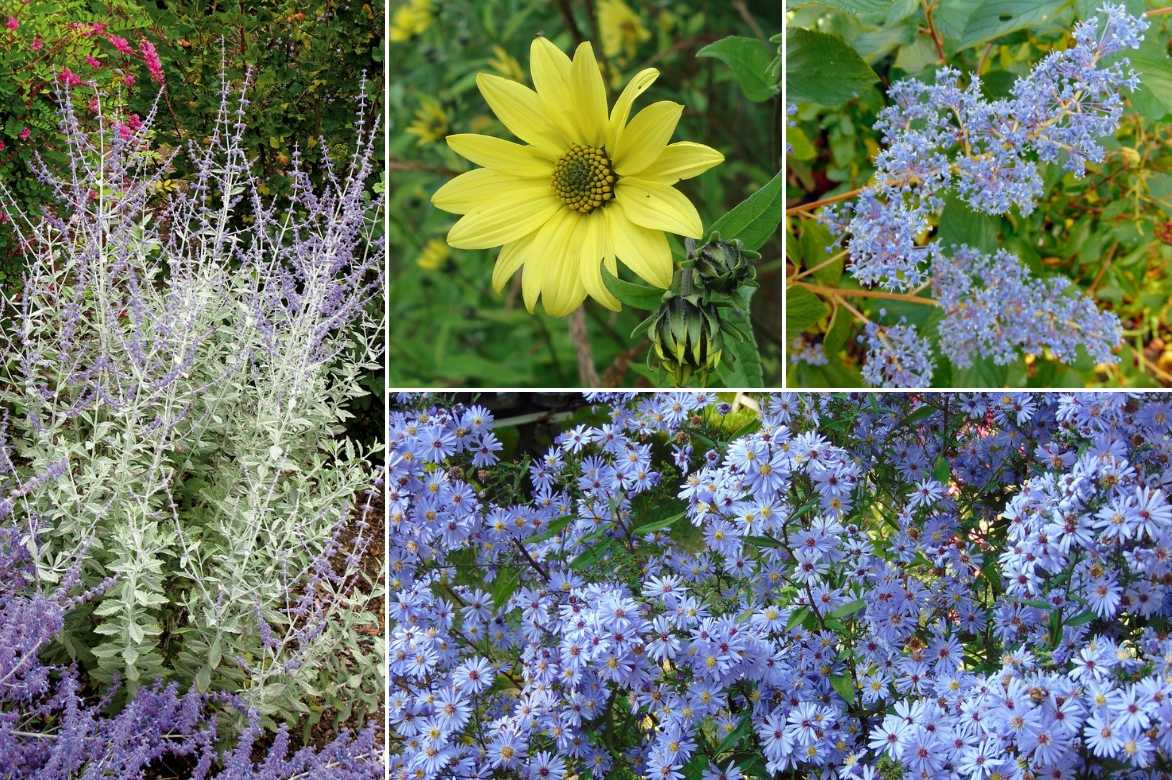
An idea for a combination: Perovskia ‘Silvery Blue’ (Photo Plantipp), Helianthus ‘Lemon Queen’, Ceanothus delilianus ‘Gloire de Versailles’, Aster cordifolius ‘Little Carlow’
In a naturalistic meadow, they accompany Leucanthemums, Buenos-Aires verbenas, and tufted canches.
In a luxuriant mixed-border, flowering of perennial sunflowers accompanies that of summer-flowering perennials in warm tones such as Cosmos, giant scabious, Coreopsis, Kniphofia, Gaillardias, Echinacea and autumn-flowering perennials such as daylilies and late salvias.
In a large bed, big clumps of yellow sunflowers will radiate until first frosts, surrounded by other daisy-like flowers, annual sunflowers, some plants of Helenium, Tithonia, small Bidens and flamboyant Rudbeckia that will also help hide base of their tall stems.
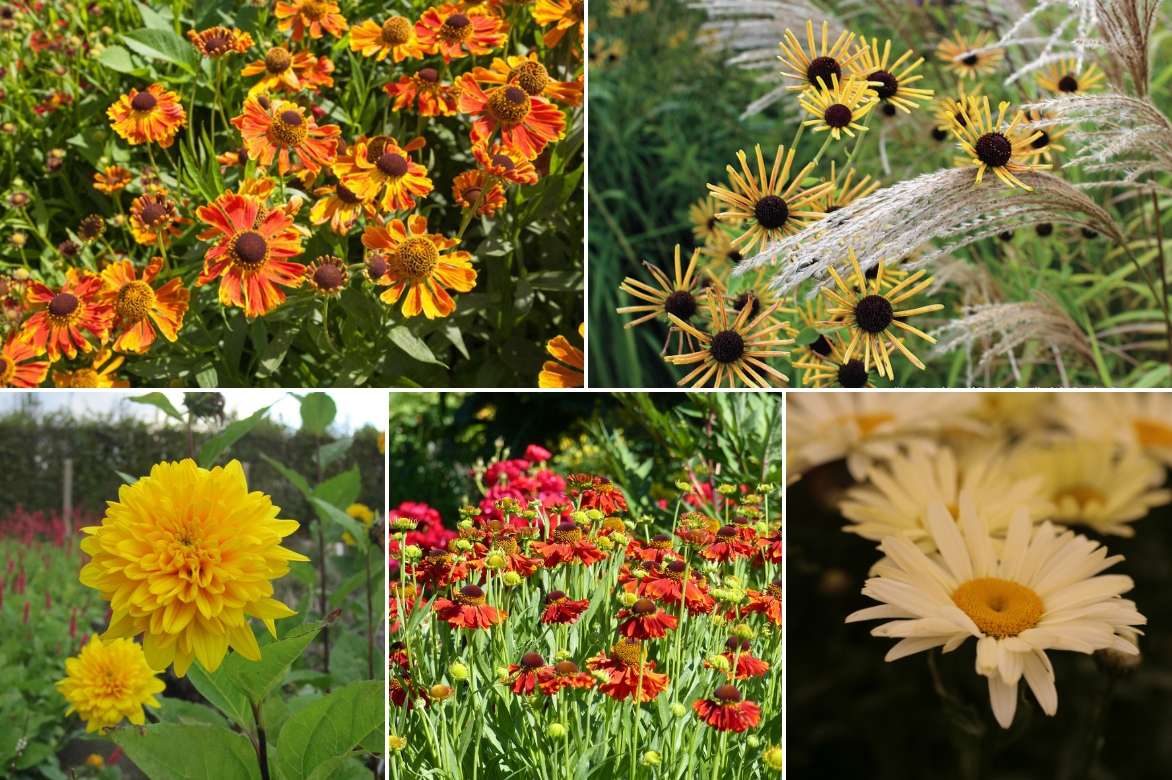
An example of a combination: Helenium ‘Waltraut’ (©Horticolor), Rudbeckia subtomentosa (‘Henry Eilers’ or ‘Little Henry’), Helianthus decapetalus ‘Plenus’, Helenium ‘Moerheim Beauty’, Leucanthemum ‘Banana Cream’
To set garden alight, place flowers of perennial sunflowers near large-flowered dahlias and cannas; light-habit perennials such as gauras and Japanese anemones will provide a delicate counterpoint.
In more graphic scenes, they pair with large airy grasses such as Miscanthus, Andropogon or diamond grasses.
In an open sunny garden, place tall slender sunflowers near other giant plants with autumn flowering such as Vernonia gigantea, Actaea, Eupatorium, Silphium perfoliatum, and large Coreopsis.
They are also excellent companions for late-flowering roses, at whose feet they create cheerful late-summer scenes.
Their sunny flowering will set off beautifully against foliage of autumn-coloured bushes such as large berberis, cotinus and euonymus.
→ Discover more pairing ideas with Helianthus
Useful resources
- Too bright? Too showy, perennial sunflowers? Learn how to tone down yellow flowers in the garden and embrace them!
- What to plant with your Hélianthes in a sunny naturalistic meadow?
- Be inspired by Hermannshof garden in September!
- Discover our collection of late-flowering perennials to extend the season into winter.
- Subscribe!
- Contents
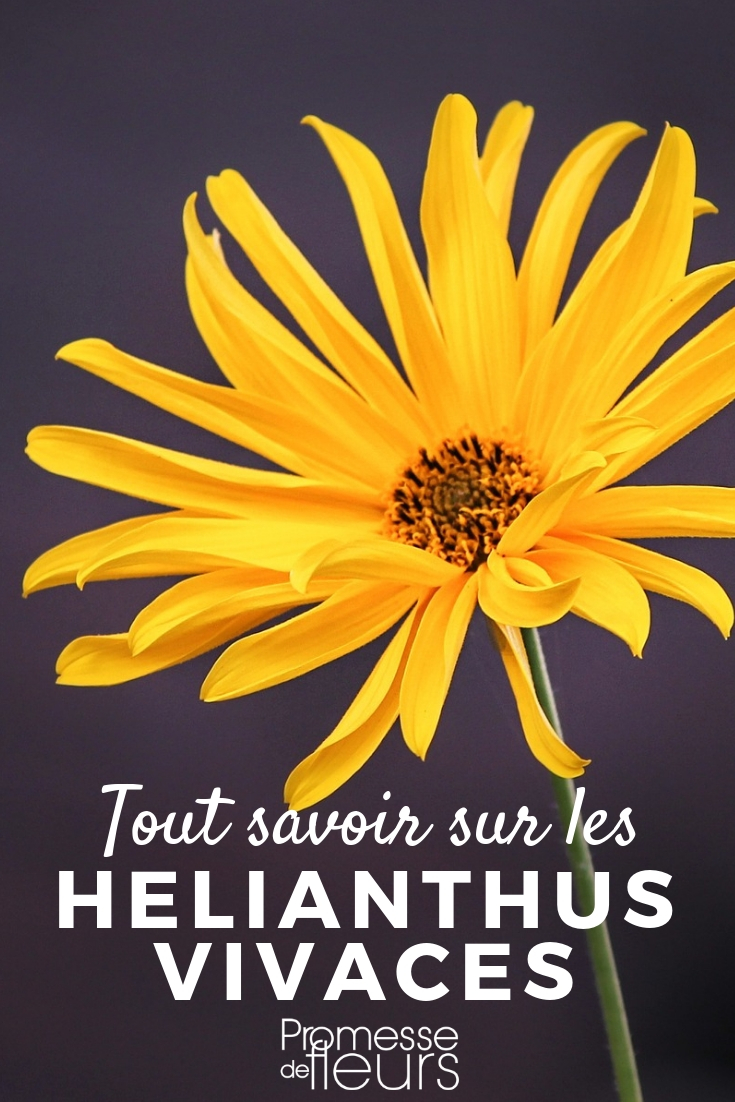
































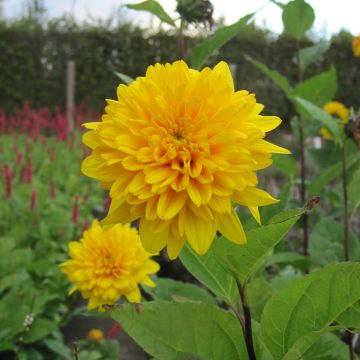
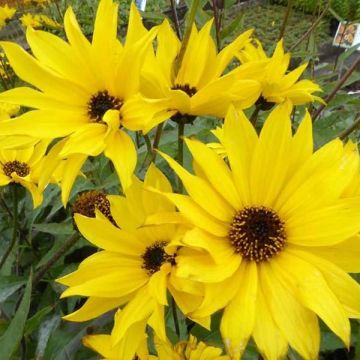

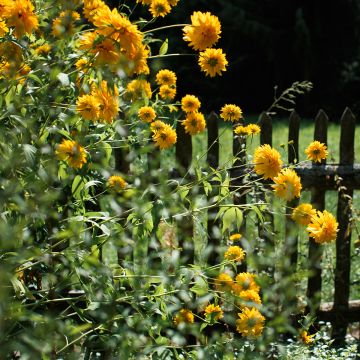
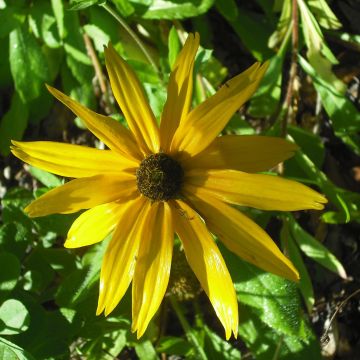
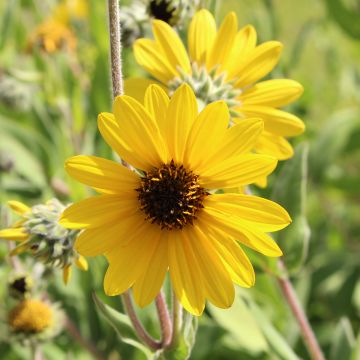
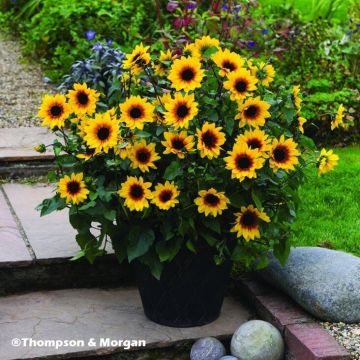
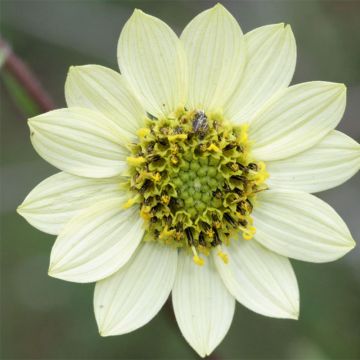
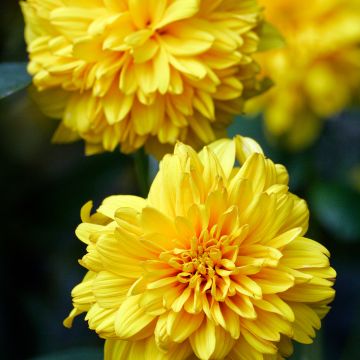
Comments